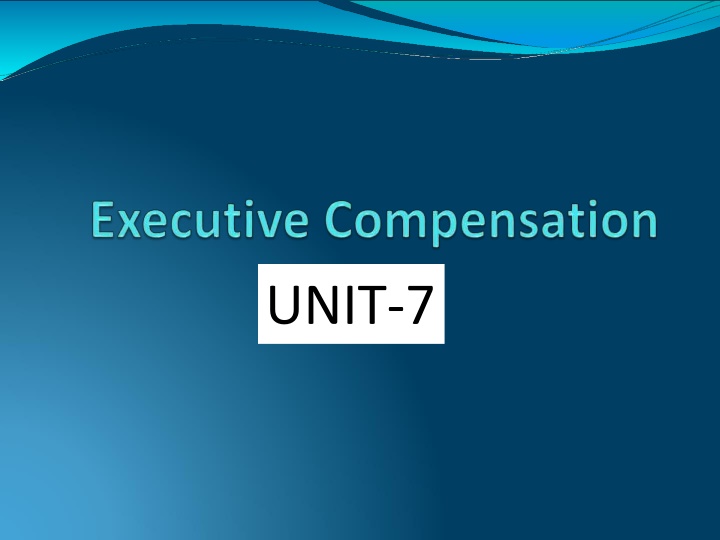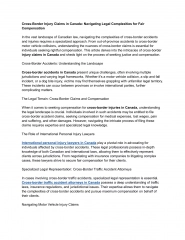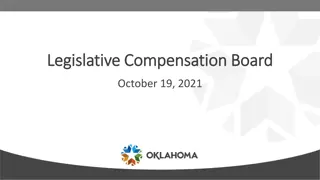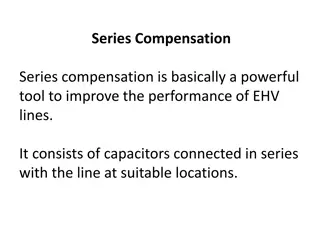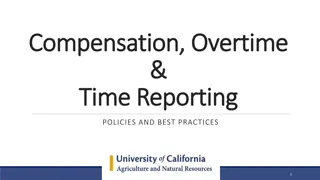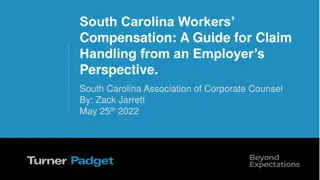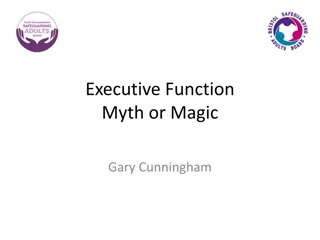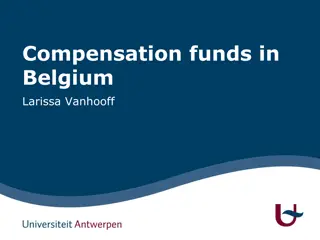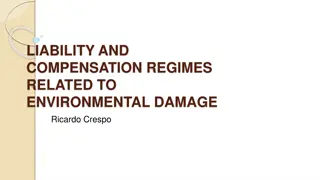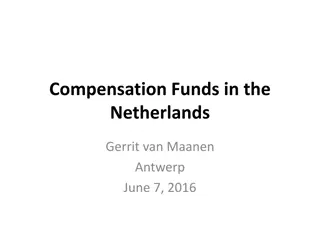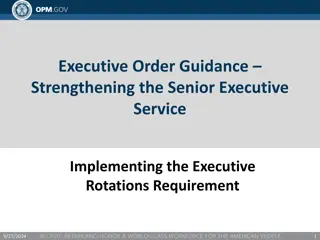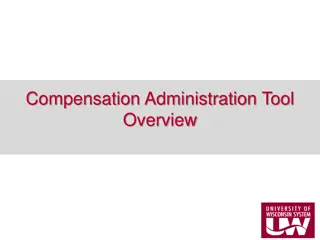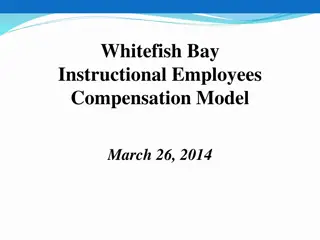Executive Compensation in Organizations
Executive compensation, a crucial aspect of corporate governance, comprises financial and non-financial rewards given to executives for their service. The compensation program aims to attract, retain, and motivate executives to align with the organization's strategy. It includes elements like salary, bonuses, stock options, and long-term incentives. The principles of executive compensation focus on profits generation, long-term orientation, high bonuses, non-cash components, risk management, and balanced scorecard implementation. Short-term pay is based on base salary and immediate performance bonuses, while long-term pay includes stock options and performance-based incentives.
Download Presentation

Please find below an Image/Link to download the presentation.
The content on the website is provided AS IS for your information and personal use only. It may not be sold, licensed, or shared on other websites without obtaining consent from the author.If you encounter any issues during the download, it is possible that the publisher has removed the file from their server.
You are allowed to download the files provided on this website for personal or commercial use, subject to the condition that they are used lawfully. All files are the property of their respective owners.
The content on the website is provided AS IS for your information and personal use only. It may not be sold, licensed, or shared on other websites without obtaining consent from the author.
E N D
Presentation Transcript
Executive compensation or executive pay is composed of the financial compensation andother non-financial awards received by an executivefrom their firm for their service to theorganization. It is typically a mixture of salary, bonuses, shares of or call options on the company stock,benefits, and perquisites, ideally configured to take intoaccount government regulations, tax law, the desires of the organization and the executive, and rewards for performance
Executive Compensation The compensation program serves three main purposes. It must attract executives with the skills, experiences, and behavioral profile necessary to succeed in the position. It must be sufficient to retain these individuals, so they do not leave for alternativeemployment. It must motivate them to perform in a manner consistent with the strategy and risk-profile of the organization and discourage self-interested behavior.
The Principles of the Executive Compensation are: Clear focus on profitsgeneration Long-term orientation of the compensationscheme Motivation of manager by high bonuses Non-cash focus of the compensation (stockoptions, shares, share phantomschemes) RiskManagement Balanced Scorecard implemented into the Compensation Scheme
The executive compensation consistsusuallyfromtwo mainparts: Short TermPay Long TermPay
The Short TermPay The short term pay of the executives is about thebase salary and short term bonuses, which are paid on the basis of the immediate performance of the organization. The bonuses are usually deferred over a period of time. The short term payisusually fully cash based executive compensationcomponent.
The Long TermPay The long term pay is about the stock options,shares, restricted stocks and pay based on the performance against the index. The shareholders use these long term compensation components to protect the value of the organization and betting of the top executives on the growingvalue of the organization on themarket. The long term compensation components can be realized just in case, the stock price of the organization grows. The long term pay componentis usually non-cash based.
Types of Executive Compensation There are many different forms of executive compensation that offer a variety of tax benefits and performance incentives.Below are the most commonforms: Cash Compensation This is the sum of all standardcash salarycompensation that theexecutivereceives fortheyear. Deferred Compensation This is compensation that is deferred until a later date, typically for tax purposes. However, changes in regulations have lessened the popularity of this type of compensation. Examples of deferred compensation include pensions, retirement plansetc
Long-Term Incentive Plans (LTIPs) Long-term incentive plans encompass all compensation that is tied to performance for tax purposes. Current taxlaws favor pay for performance-typecompensation. Stock options- An employee stock option (ESO) iscommonly viewed as a complex call option onthe common stock of a company, granted by the company to an employee as part of the employee'sremuneration package
Restricted stock- Outright grant of shares that are restricted in transferability and are subjecttovesting. Once vested,they are economically equivalent to outright ownership ofstock. Retirement Packages These are packages given to executives after they retire from the company. Theseare important to watch because they can contain so-called "golden parachutes" for corruptexecutives. Executive Perks Thesearevariousotherperksgivento executives, including the use of a private jet, travel reimbursements and otherrewards.
Executive Compensation Benefits Employee Benefits is a term used to indicate the non-wage part of remuneration consisting of abroad range of special payments or benefits inkind. Typical Employee Benefits are: Insurance, Pension/retirement benefits,
Income protection/social security, Maternity pay/daycare/childcare, Profit sharing/Employee Stock Ownership Plan, Holiday/vacation, relocationassistance/benefits, Legal assistance, company car, company computer/internet access, Company mobile phone, Membership of sport and health clubs/leisure activities during worktime, Education/personal development, staff discounts, industry-related benefits.
Golden Handcuff is a form of employee benefits or executive compensation, in which a (substantial) bonus is built into an executive's contract,subjecttocontinuousemploymentfora certain number ofyears. In case of leaving the employment premature there would be substantial financial penalties or theentire amount may have to berepaid.
Golden benefits or executive compensation, whereinalarge payment made by a company to a senior executive is done upon termination of employment (retirement) before his/her contractends. Handshake is a form of employee
Golden Hellois a form of employee benefits or executive compensation,wherein a signing bonusisgiventoanexecutive to inducehim to leavea previous employment in order to take up a new employment by the payment of a large sum of money or other considerableremuneration. Such welcome arrangement could be in cash orin shares or inoptions.
Golden Parachute is a form of employee benefits or executive compensation, whereinthe executive is provided with a lucrativeseverance package in the event of job termination, for examplein case of a takeover by an acquiring company. A GP may include a continuation of salary, bonus and/or certain benefits and perquisites, as well as accelerated vesting of stockoptions.
